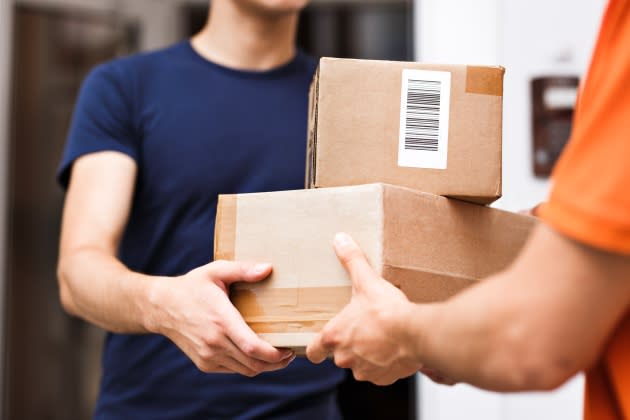Study Reveals the Pain Points U.S. Consumers Experience With Delivery

U.S. consumers aren’t keen on ordering items of high importance for delivery, according to ParcelLab’s latest Mission Critical Deliveries report and survey, which aimed to help retailers, suppliers and carriers better understand how trust is impacted during deliveries of high importance or time sensitivity.
The company’s survey was conducted online with third-party research firm YouGov in the last week of June 2022.
More from WWD
Attitudes of the U.S. consumer were found to be reluctant, with the authors of the report saying the survey’s respondents have a harder time trusting than they realize. For 32 percent, reluctance comes following a failed delivery or negative experience when ordering, with 29 percent saying they are reluctant to place an order for a special occasion when the item’s arrival is time sensitive. Another 28 percent say they become reluctant when an item would be difficult to replace, 26 percent say they are reluctant to place an order for delivery if an essential item is needed for a vacation or trip and 26 percent say they hesitate to order when running low on a particular item.
Still, data from the survey showed that 66 percent of respondents generally do trust that time-critical or high-importance items will be delivered by a specific time, while just 25 percent do not. The authors of the report said that while this shows a high level of trust, it does question if trust for brands is truly present.
“Time critical and high importance deliveries are often viewed as such because consumers are dependent on these items in one way or another,” said Tobias Buxhoidt, founder and chief executive officer of ParcelLab. “This means the stakes are higher to deliver an exceptional experience, as it’s clear even the smallest of hiccups could sway them to not even make the purchase.”
The authors of the report said a delivery can “make or break the customer experience.” Thirty percent of consumers surveyed reported that negative reviews and comments on a supplier’s delivery service would be a factor in deciding to order time-critical or high-importance items to be delivered at home.
The reasoning is hardly unfounded. In just the last three years, 37 percent of respondents said they had experienced an average of two to five late or lost deliveries of these items, and in the last two years, 27 percent said they had these types of packages left at the wrong address. Another 30 percent shared they had experienced a package being left unprotected or in the rain, with nearly a quarter of these packages becoming damaged.
Due to these experiences, almost half of survey respondents said they would place blame on the carrier, and 26 percent said they would place the blame on the supplier or retailer in which the item was ordered.
With the goal of the data being to inform retailers on how to improve the customer journey by implementing tools and resources that will create key touchpoints for customers, Buxhoidt points out that the findings indicate there are many opportunities to improve. “This report showed that almost half of respondents would be encouraged to order these types of deliveries if there were real-time updates and order tracking via an app or website, showcasing the value associated with elevated customer communications,” Buxhoidt said.
To regain trust with consumers who have had negative experiences, Buxhoidt told WWD the best course of action for retailers is to “own the relationship from beginning to end — that means not passing off post-purchase communication to carriers, as updates are often inaccurate, and packages can show as being in-transit for days without an update. Maintaining communication throughout the customer journey results in a positive post-purchase experience that in turn builds long-term loyalty with customers.”
Looking ahead toward a fast-approaching holiday shopping season, Buxhoidt said delayed deliveries are going to be somewhat inevitable, given ongoing issues with the supply chain; however, with the right approach, retailers can prevent consumers’ distrust.
“The frustration for consumers often lies not in the delay, but in the lack of communication from retailers as they anxiously await a delivery, especially when the items are critical,” said Buxhoidt, acknowledging that during the holidays, the pressure is especially high to get gifts on time.
“Retailers need to proactively monitor and communicate with customers, using data from the warehouse to the logistics provider to the customer’s doorstep, wrapping it together in a meaningful way to create a positive post-purchase experience,” Buxhoidt said. “Nearly one-third of respondents reported that negative reviews or comments around a supplier’s delivery service would be a reason as to why they may not order time critical or high importance items to their home, which could drastically affect retailers during the holiday season. Retailers often fulfill items based on current warehouse inventory, but other times items may come from a different warehouse completely. Communication with the consumers ensures they are aware of the multiple packages and multiple shipments, but most importantly, which products are in which packages. Retailers can incorporate real-time updates and order tracking to ensure customers are informed on their shipments of both leisurely and critical items.”
Notably, additional factors that could be contributing to consumer reluctance to order delivery include a current shortage in medical projects, rising inflation which impacts shipping costs and ongoing supply chain challenges.
FOR MORE WWD BUSINESS NEWS:
Survey Shows Consumers Are Feeling Stressed Leading Up to Peak Holiday Season
Field Notes: BNPL Leaders Continued Evolution
Consumer Confidence Shrinks as Expectations of Living Costs Rise
Sign up for WWD's Newsletter. For the latest news, follow us on Twitter, Facebook, and Instagram.
